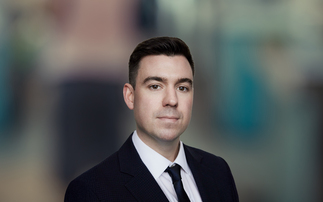The primary objective for the UBS US Large Cap Growth Team, based in New York, is to discover growth opportunities that have been underestimated or overlooked by the wider market. The US has provided fertile ground to such investors over the past 18 months, leading to impressive results for the UBS US Growth Fund.
Over 2009, the Fund delivered performance of 35.3 %, in sterling terms, compared with a sector average return of 19.1%. This resulted in top decile performance over the calendar year.¹
An established investment process
The investment process is based on fundamental research. Josh Chisari, Client Portfolio Manager of the UBS US Growth Fund, believes that is the only way the team can be fully confident in forming opinions.
However, stocks need to be selected and incorporated within a balanced portfolio framework. Josh describes the process: "To do this, the team deliberately classify growth stocks into three distinct types. These are labelled as follows:
• ‘Classic': Those companies that are widely covered and actively traded. However, short-term fluctuations create opportunities to make purchases of strong companies at attractive prices
• ‘Elite': Companies experiencing a phase of hyper growth that can often be mispriced by the market
• ‘Cyclical': Those companies that the team feel are experiencing pricing anomalies, where the perceived view of expected value exceeds market prices."
A fully ingrained approach to risk
Risk management is integrated into every stage of the investment process and the team explicitly manage three types of risk:
1) Issue risk or stock-specific risk
Applicable, if the team's assumptions are incorrect.
"The two ways we offset the chances of this happening are by an insistence on owning ‘quality' business models and, through diversification. By diversifying risk across the portfolio, the potential detrimental effect from any single stock holding is limited," Josh explains.
2) Macro-risk
The risk of the portfolio being positioned incorrectly within the prevailing environment.
Josh comments:
"To address this, we build a portfolio across the three different types of growth referred to above. Because their interrelationships have a relative low correlation, the overall risk is spread."
3) Valuation risk
Measured through stock modelling.
Josh provides a further insight "Through this process, the team determine a view on the ‘ceiling' and the ‘floor' prices of each stock profiled and are therefore able to establish a range, within which, we believe each one should trade at.
"If the stock trades at the lower end the larger the weighting to it, as our view on the upside is greater than the downside. Perversely, should it subsequently appreciate through the range, the potential upside will diminish and we would subsequently reduce our exposure to the stock."
Portfolio Construction
The Fund is predominantly invested in large-cap names. Although, the team has a wide investment universe, the portfolio is relatively concentrated, with 35-55 holdings. Through a high conviction approach, the team aims to maximise potential returns by taking sizeable weightings to successful growth stories, while ensuring that the overall portfolio is sufficiently diversified to minimise risk.
A proven track record through market cycles
Although the UBS US Growth Fund was launched recently, the track record for the particular strategy that the Fund is based upon dates back to 31 January 2000². The Team currently manage around $8.7bn of assets in the US Large Cap Select Growth strategy and related strategies overall and have been successfully managing money since 1998².
Such experience has proved invaluable. Josh comments "While the past decade has certainly been eventful for equity investors, it has been particularly acute for US Large Cap Growth investors, who have faced two separate ‘bubbles' over the period. The first was the ‘tech bubble' at the start of the decade and second, the liquidity crisis towards the end. However, by remaining true to our fundamental research and established investment process and maintaining a keen focus on risk, we have been able to navigate through challenging waters and consistently outperform our benchmark."
Market environment and outlook for the UBS US Growth Fund
At present, the portfolio is relatively defensive, with the team reducing exposure to some of the names that performed particularly strongly in 2009.
"In our view, US equities continue to offer growth opportunities overall, although they are not as great as those extreme discounts seen in early 2009." Josh explains.
"An example of this would be within healthcare, where we've recently increased our exposure, as we believe this sector offers exceptional stock valuation opportunities."
What sets the UBS US Growh Fund apart from its peers?
"In our opinion, our competitive advantage over the peer group lies in the consistency with which we generate returns for clients," Josh states. "This is driven by the depth and quality of our research, the allocation across the three buckets of growth and the rigours of our keen focus on risk management."
Find out more?
Interested in this high flyer?
Please select one of the links below, or call us on 0800 587 2111.
www.ubs.com/usgrowthfund
›Fund Manager Interview
›Fact Sheet
Important Information
This document is for Professional Clients only. It is not to be distributed to or relied upon by
Retail Clients under any circumstances. ¹Source: Lipper Hindsight. Performance is based on NAV prices with income reinvested net of basic rate tax and in Sterling terms to 31 March 2010. ²Source: UBS Global Asset Management, 31 March 2010.
Issued in April 2010 by UBS Global Asset Management (UK) Ltd, a subsidiary of UBS AG, 21 Lombard Street, London EC3V 9AH. Authorised and regulated by the Financial Services Authority.
Telephone calls may be recorded. © UBS 2010. The key symbol and UBS are among the registered and unregistered trademarks of UBS. All rights reserved.













